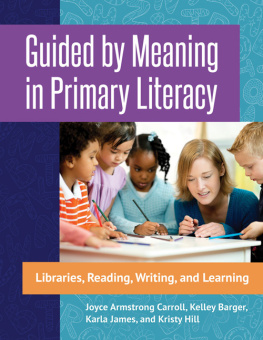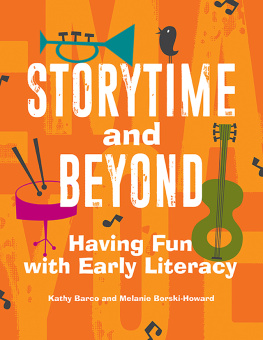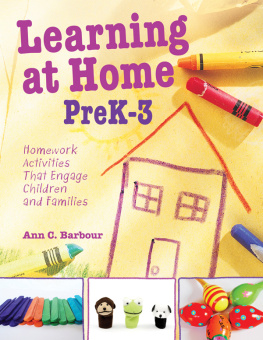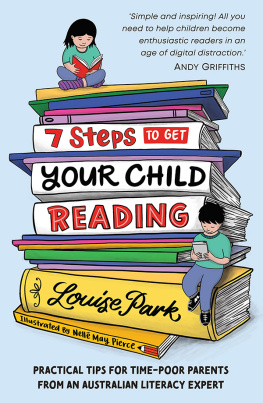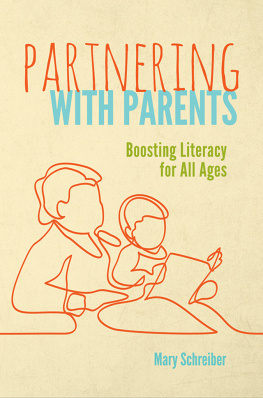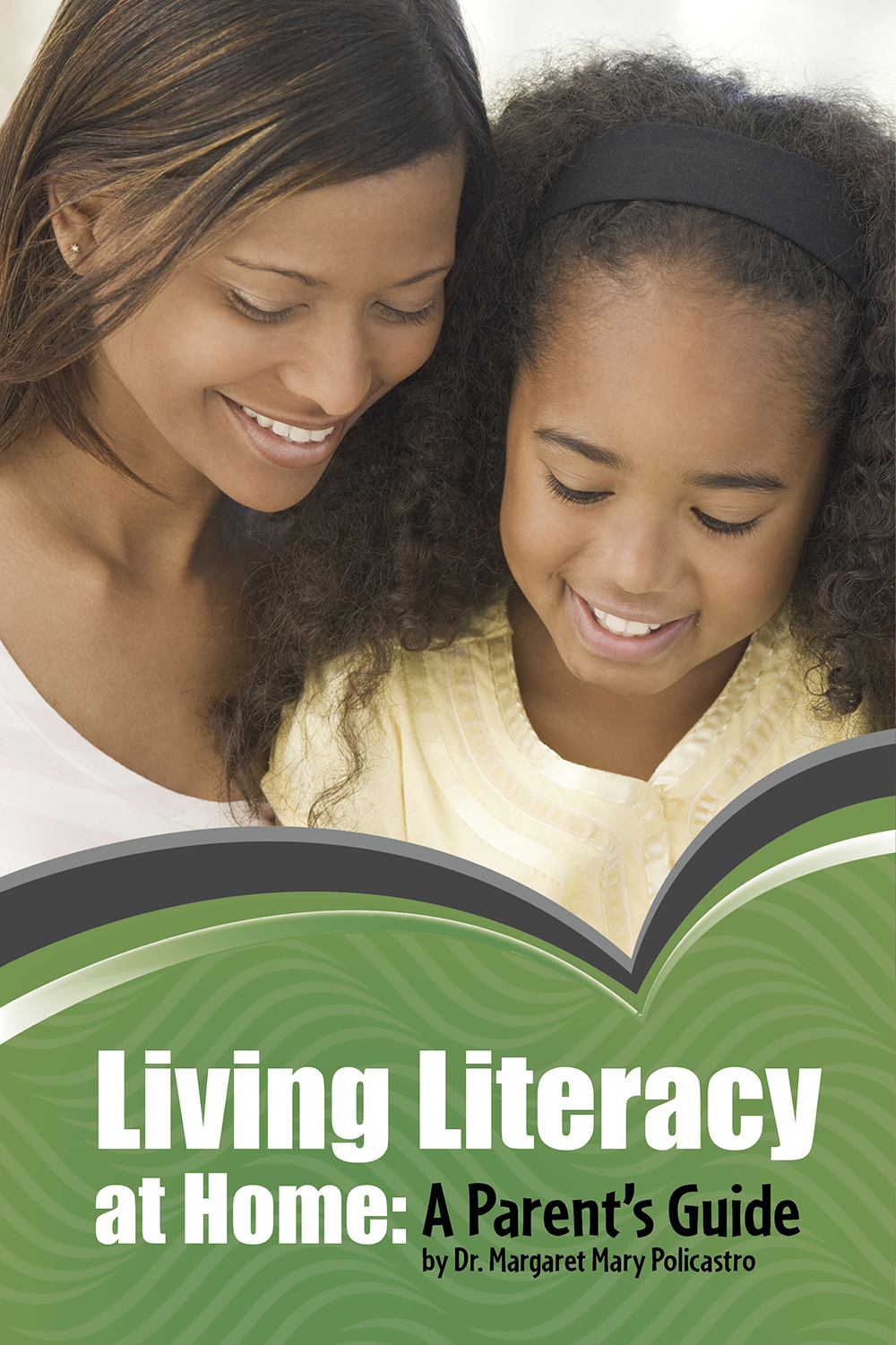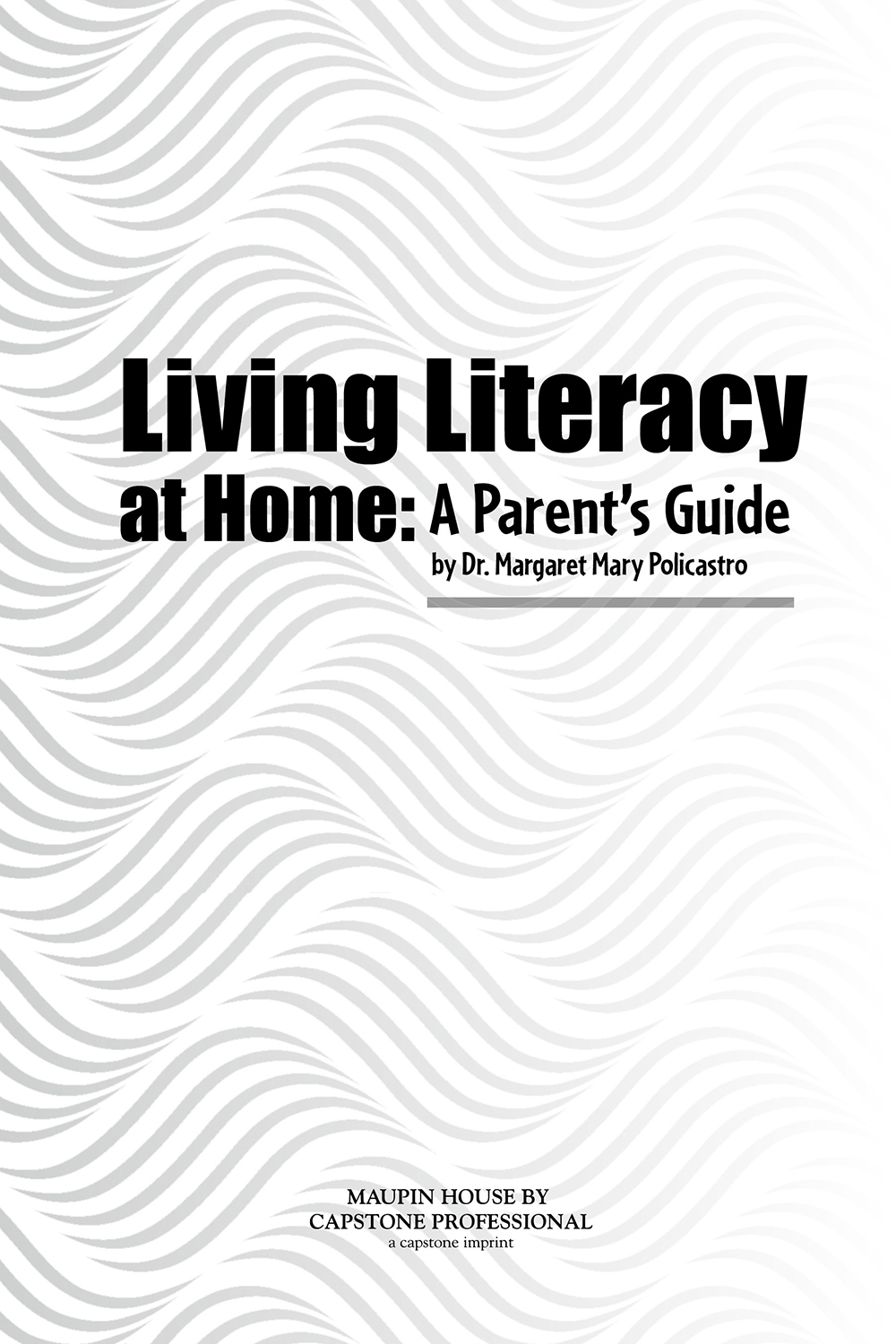Dedication
This book is dedicated to my parents, Anne C. Piechrowski and C. Edward McMinn, who instilled the love of literacy within me. I owe all of my passion, zeal, and zest for the love of literacy to my mother. She introduced to me to books when I was very young. We went to a weekly story hour at the South Bend, Indiana, branch library, where Mrs. Krocksel, the librarian, read stories to my siblings and me. I hold those memories dear, and Im forever grateful for the early opportunity and experiences at the library from my mother. There is no question that I was destined to be a literacy educator. And for that I am forever grateful to my parents.
I also dedicate this book to my four sons, Matthew, Timothy, Andrew, and Sebastian, who have made Living Literacy at Home our life. Their patience with me for allowing our lives to be a learning laboratory for literacy is forever cherished and appreciated. Every summer for 10 years, one to four of my sons would attend the Roosevelt University Summer Reading Clinic that I direct. Although it was not easy to take my children to work with me, those summers are remembered as a gift as it is where my lives as a mother and a literacy educator were truly woven into one.
Acknowledgments
I interviewed many parents for this book, asking just a few simple questions about their lives as parents and the interactions and experiences they have had at home and in school with literacy. Additionally, working in our Summer Reading Clinic at Roosevelt University, I have talked to thousands of parents over the years about their concerns, hopes, and dreams about their childrens literacy development. I learned so much from all the conversations and interviews, which have informed and shaped this book. The responses are spread throughout this book, and no real names are used. I acknowledge these parents for sharing their important stories with me; parents on a quest to have lifelong literate children. During the Summer Reading Clinic of 2015, graduate students Kathleen Skinner, Rachael Buckley, Carmia Fuqua, Laurie Speicher, and Casandra Pagni and volunteers Shannon Hart, Maria Alba, Marie Aspell, Courtney Dong, and Hiral Amin were instrumental in providing parent workshops and strategies that are discussed throughout this book. I appreciate all of their contributions and ideas about how living literacy at home is something that we need to work on with parents and form a collaborative partnership around.
I also want to acknowledge Karen Soll, Managing Editor at Capstone Professional, for her unending support of my work. Karen is a dream-come-true editor who knows exactly how to move a writer forward. I also want to thank Emily Raij, also an editor for Capstone, for the feedback that shaped this book. She has a keen editing sense and knows how to move a writer forward.
This work could not happen without the support of the College of Education and the Office of Community Engagement at Roosevelt University. Dr. Thomas Phillion, Dean of the College of Education, and Dr. Teryl Rosch and Jeanne Barnas from the Office of Community Engagement provided unending support of this work. I also want to acknowledge Dr. Antonia Potenza, Associate Dean of the College of Education at Roosevelt University, who is an early childhood expert. Her knowledge about childrens development and the importance of play, pretend play, and dramatic play were important in this book. She encouraged me to be sure to include all of these important topics in the book. I also want to recognize John MacDougall and Sabrina Elms in the College of Education for their assistance and guidance with the photographs for this book.
An important acknowledgement goes to the Illinois Board of Higher Education (IBHE) for supporting my work in the schools with an Improving Teacher Quality (ITQ) grant through No Child Left Behind (NCLB). This work has allowed me to collaborate in schools with teachers, school leaders, and parents in order to promote access to books for all. This access to books resulted in the development of parent libraries and family literacy nights in our schools. I would like to recognize David Wood, Principal of Our Lady of the Wayside School in Arlington Heights, Illinois; Dr. Elizabeth Alvaraz, Principal of John Dore School in Chicago, Illinois; Carolyn Jones, Principal of Perkins Bass School in Chicago; Dr. Ann Marie Riordan, Principal of Christ the King School in Chicago; Stephen Fabiyi, Principal, and Miyoshi Brown, Assistant Principal, at Metcalfe Community Academy in Chicago; and Alicia Lewis, Principal, and Dr. Pam Strauther-Sanders, Assistant Principal, of Bright School in Chicago. I also want to recognize the Roosevelt University literacy coaches Marlene Levin, Melissa Marquino-Peterson, Dr. Becky McTague, and Diane Mazeski, who all work hard to promote and maintain home and school partnerships. A special thanks goes to Jody Hunt and Dr. Dianne Gardner from IBHE.
I also want to recognize Jorie Sutton and Valerie Mercurio, student workers at Roosevelt University, for assisting in the review of the literature for this book, helping with the glossary, assisting with photographs, checking references, and much more.
Foreword by Kathy Barclay
Learning to read and write are the most important skills to be developed during the early years of school, and, as author Margaret Policastro so beautifully illustrates, children who fall in love with reading when theyre young are likely to enjoy it when theyre older. Research indicates a strong link exists between family involvement and student benefits, such as higher academic achievement, better attendance, and improved behavior at home and school. Studies also show that parents care about their children and want to be involved in their childrens education; however, they do not always know what they can or should be doing at home to support academic learning. Becoming literate is a process that begins in the first three years and continues throughout ones life. The interactions young children have with literacy materials, such as books, paper, and crayons, and with the adults in their lives are the building blocks for language, reading, and writing development. It is these building blocks of language and literacy that comprise the foundation upon which all future academic learning is built.
Ensuring a successful academic experience for all children is a monumentally important task, one that requires effective communication and collaboration among schools, families, and students. Included within Living Literacy at Home is a wealth of information and ideas to help parents make every day a literacy-rich day. Parents will also find helpful information about school expectations, communicating with teachers, preparing for parent-teacher conferences, and building strong home-school connections.
Home and school are the two most important institutions in a childs life; the meaningful and purposeful intersection of these serve to benefit both. This is precisely why both parents and educators need Living Literacy at Home. Parental involvement is a key instructional strategy that, when used appropriately, can make teaching more effective. And parental involvement in literacy-related activities outside of school has been shown to be strongly related to childrens reading performance.
Readers of Living Literacy at Home will discover tried and true family-friendly supports for promoting the early and lasting development of critical life skills in reading, writing, listening, and speaking. Margaret Policastro draws upon her work as a literacy educator and her experiences as the parent of four boys to create this gem of a book. Aimed at bringing key aspects of home and school together to create strong lifelong readers and writers,


